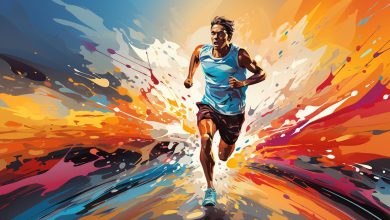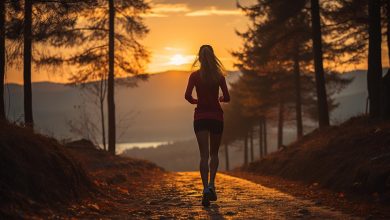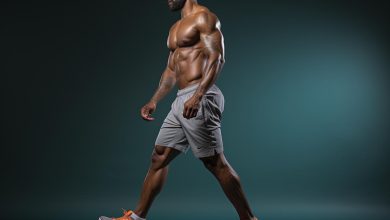Yoga Poses for Runners: Stretching and Strengthening
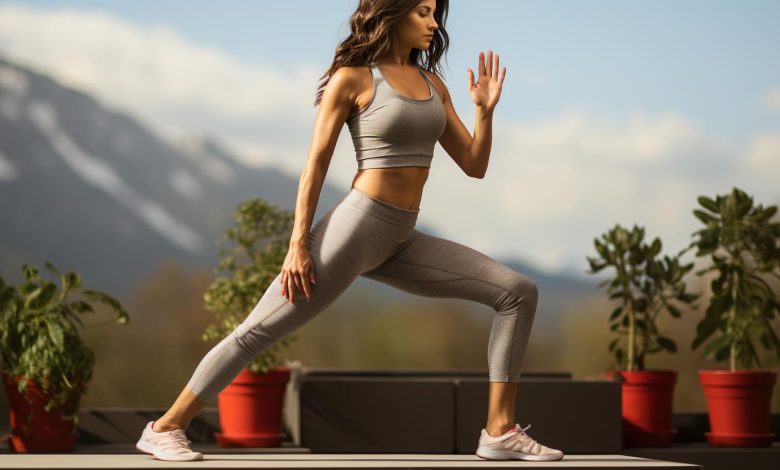
Imagine yourself lacing up your running shoes, ready to hit the pavement and conquer that next race.
But before you take off, have you considered incorporating yoga into your training routine?
In this article, we will explore the benefits of yoga for runners and guide you through essential stretches, strengthening poses, and advanced techniques to help improve flexibility and range of motion.
Get ready to enhance your running performance with these yoga poses designed specifically for runners.
Benefits of Yoga for Runners

Yoga’s benefits for runners include improving flexibility and reducing the risk of injuries. By incorporating yoga into your training routine, you can prevent common running injuries such as muscle strains, sprains, and overuse injuries. Yoga helps to increase your range of motion and improve joint mobility, allowing you to move more freely while running.
The stretching exercises in yoga help to lengthen tight muscles that often become strained during running. This increased flexibility not only improves your overall performance but also reduces the likelihood of injury.
In addition to injury prevention, yoga also enhances mental focus, which is crucial for any runner. The practice of deep breathing and mindfulness in yoga helps to calm the mind, improve concentration, and reduce stress levels. When you are focused mentally, you can better tune into your body’s needs during a run and make adjustments accordingly. This heightened awareness allows you to listen to your body’s signals and avoid pushing yourself too hard or ignoring warning signs of potential injury.
Overall, incorporating yoga into your training regimen offers numerous benefits for runners. It not only improves flexibility and reduces the risk of injuries but also enhances mental focus. So why not give it a try?
Dedicate some time each week to practicing yoga poses specifically designed for runners, and reap the rewards both on and off the track or trail!
Essential Stretches for Runners
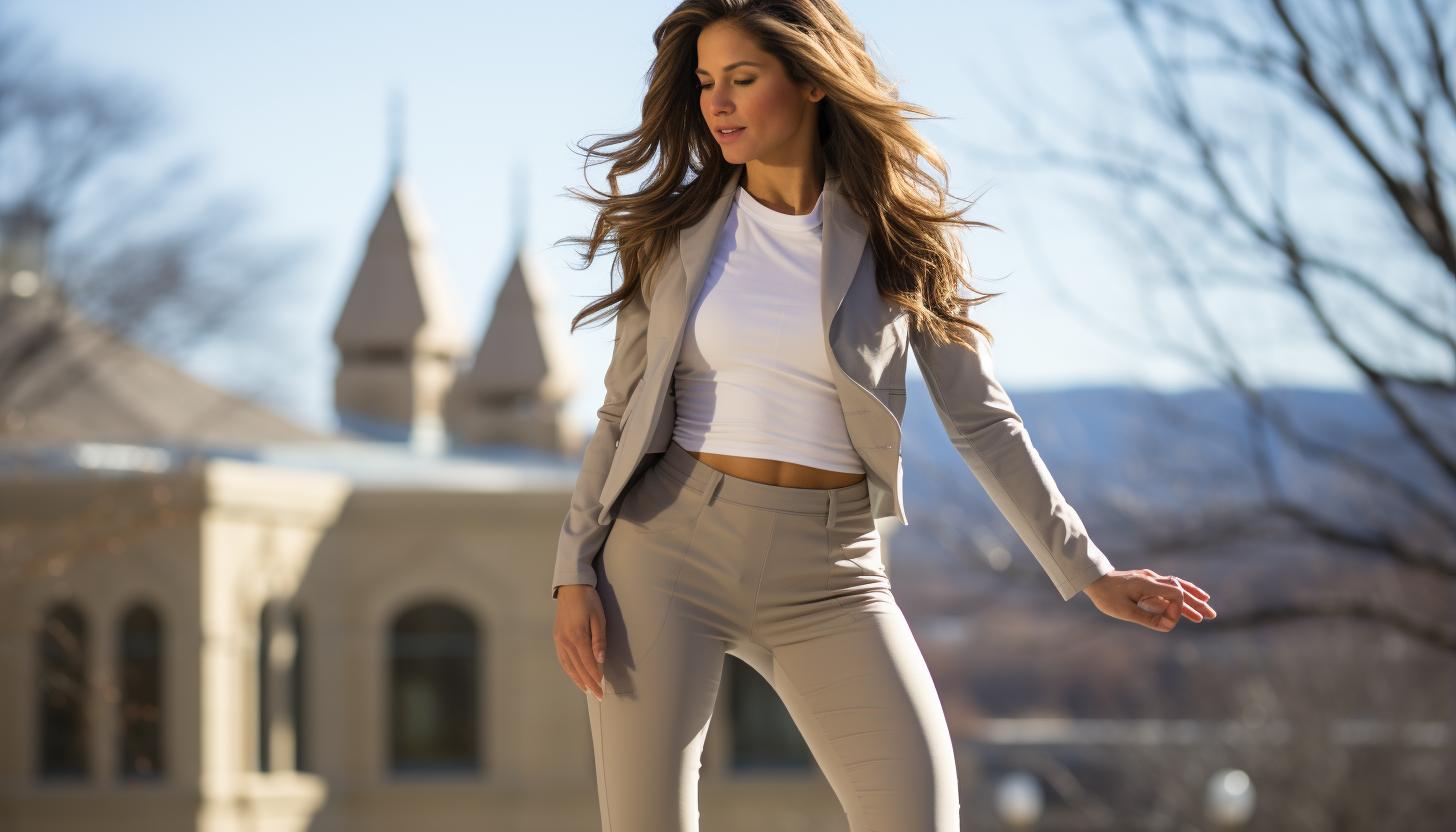
It’s important to incorporate essential stretches into your routine as a runner. Stretching helps improve flexibility, prevent injuries, and enhance performance.
Whether you’re preparing for a run or recovering from one, here are four key stretches that should be part of your pre-run warm-up and post-run recovery:
1. Standing Forward Fold: Stand with feet hip-width apart and bend forward from the hips, reaching towards your toes. This stretch targets the hamstrings and calves, which can become tight during running.
2. Lunge with a Twist: Step forward into a lunge position, keeping your front knee aligned over your ankle. Place both hands on the ground inside your front foot and twist towards the side of your front leg. This stretch opens up the hips while also engaging the core.
3. Quad Stretch: Stand tall and grab one ankle with the corresponding hand, pulling it towards your glutes while maintaining an upright posture. This stretch targets the quadriceps, which can tighten from repetitive running motions.
4. Seated Spinal Twist: Sit on the ground with both legs extended in front of you. Bend one knee and place the foot flat on the ground outside of the opposite thigh. Rotate towards that bent knee, placing one hand behind you for support and looking over your shoulder. This stretch releases tension in the lower back.
Incorporating these essential stretches into both your pre-run warm-up and post-run recovery will help keep muscles limber, prevent injuries, and improve overall performance as a runner.
Strengthening Yoga Poses for Runners
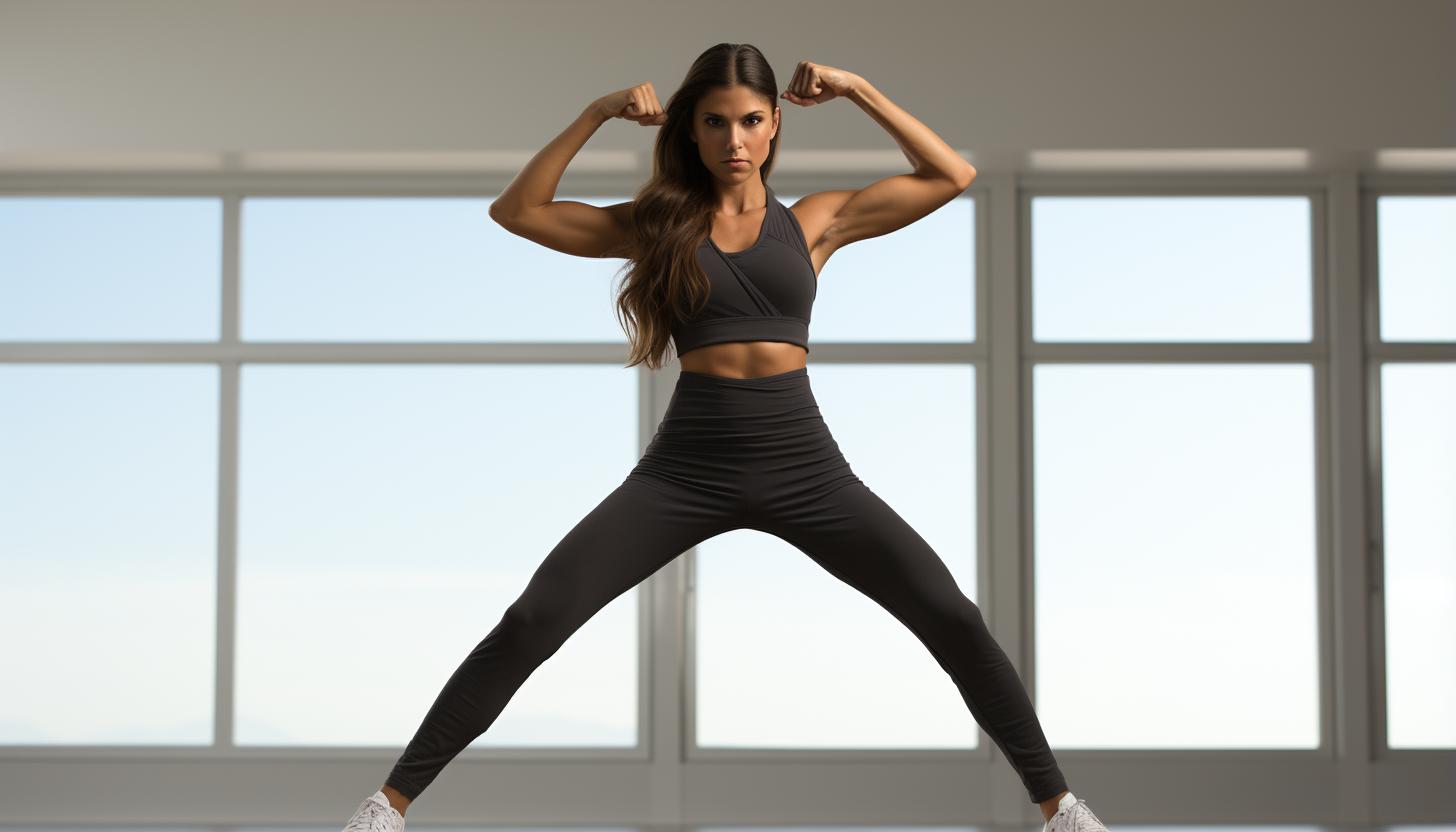
To strengthen your muscles and improve your running performance, try incorporating these powerful poses into your routine. Yoga is not only a great way to relax and de-stress, but it can also be an effective tool for runners looking to build endurance and prevent injuries.
One pose that is particularly beneficial for endurance is the Warrior II pose. This pose targets the legs, hips, and core muscles, helping to build strength and stability. To perform this pose, stand with your feet wide apart, turn one foot outwards while keeping the other foot facing forward. Bend your front knee and extend both arms out parallel to the ground. Hold this position for several breaths before switching sides.
Another useful pose for injury prevention is the Bridge pose. This posture strengthens the glutes, hamstrings, and lower back muscles – key areas that often become weak in runners due to repetitive impact. Lie on your back with knees bent and feet flat on the floor. Lift your hips off the ground as high as you can while pressing through your heels. Keep breathing deeply as you hold this position for at least 30 seconds.
Incorporating these yoga poses into your routine will help you develop strength and endurance needed to excel in running while reducing the risk of injuries along the way.
Yoga Poses to Improve Flexibility and Range of Motion
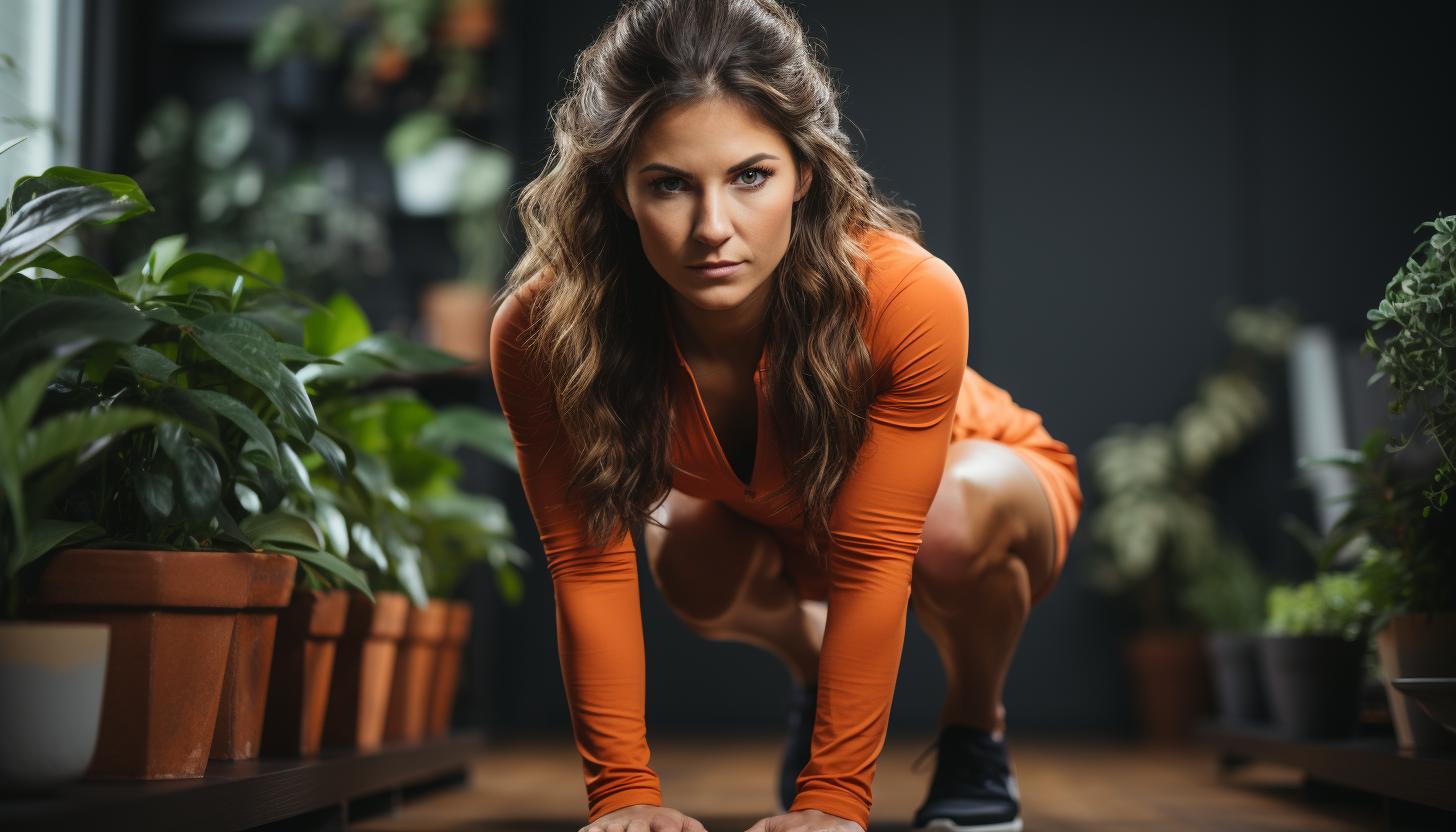
Incorporate these powerful movements into your routine to enhance flexibility and increase your range of motion. Yoga poses can be a great addition to any runner’s training program. They not only stretch and strengthen the body but also improve balance and prevent injuries.
Here are four yoga poses that can help you achieve these benefits:
1. Downward Facing Dog (Adho Mukha Svanasana): Start on all fours, then lift your hips up towards the ceiling, forming an inverted V shape with your body. This pose stretches the hamstrings, calves, and shoulders while strengthening the arms and core.
2. Warrior II (Virabhadrasana II): Stand with your feet wide apart, then turn one foot outwards and bend the knee while keeping the other leg straight. Extend your arms out parallel to the floor. This pose opens up the hips and strengthens the legs, improving balance and stability.
3. Triangle Pose (Trikonasana): Stand with your feet wide apart, then extend one arm down towards your ankle while reaching the other arm upwards towards the ceiling. This pose stretches and strengthens the legs, back, and shoulders while promoting spinal alignment.
4. Standing Forward Bend (Uttanasana): From a standing position, fold forward at the hips until your hands reach or rest on the ground in front of you. This pose stretches the hamstrings, calves, and lower back while calming the mind.
Advanced Yoga Poses for Runners
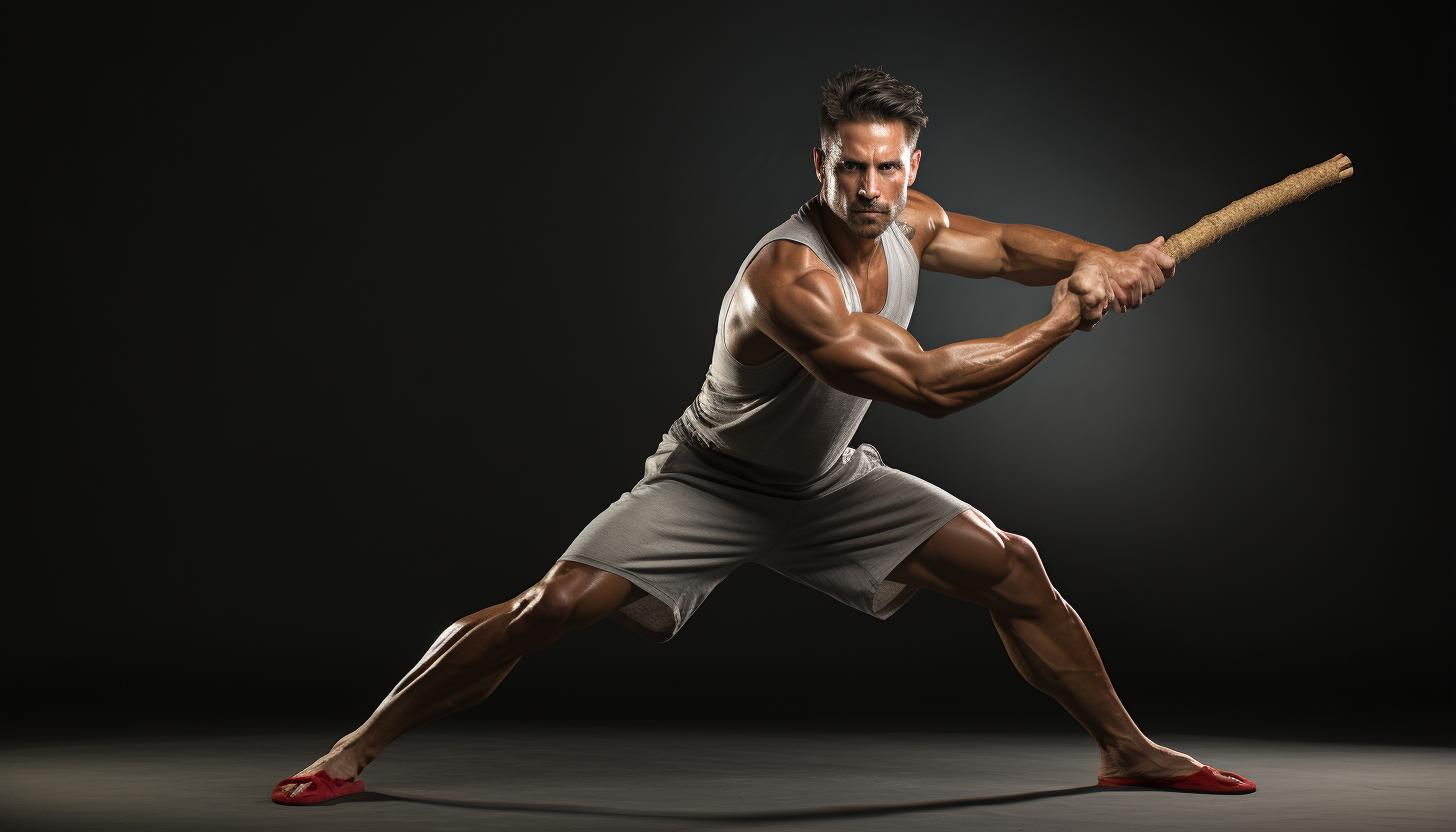
Improve your running performance by challenging yourself with these advanced yoga poses that target specific muscle groups and enhance overall strength and flexibility. As a runner, you know the importance of endurance and stamina. Incorporating advanced yoga poses into your training routine can help you build the necessary strength and flexibility to push through those long runs.
One advanced pose that is particularly beneficial for runners is the Warrior III pose. This pose strengthens your legs, core, and improves balance – all crucial aspects for maintaining good form while running. To perform this pose, start in a standing position and extend one leg straight back while leaning forward from your hips until your body forms a straight line parallel to the floor.
Another excellent pose for building endurance is the Chair Pose. Not only does it strengthen your quads, hamstrings, and glutes but it also engages your core muscles. Begin by standing with your feet together, then bend at the knees as if you were sitting back into an imaginary chair.
Conclusion
In conclusion, incorporating yoga into your running routine can greatly benefit your overall performance and well-being.
By practicing essential stretches like the Downward Dog and Pigeon Pose, you’ll improve flexibility and prevent injuries.
Strengthening poses such as the Warrior II and Boat Pose will enhance your core strength and stability.
And for those looking to push their limits, advanced poses like the Crow Pose will challenge both body and mind.
So imagine yourself effortlessly gliding through your runs, feeling strong, balanced, and free.
Embrace the power of yoga for runners and unlock your full potential on the road or trail.

